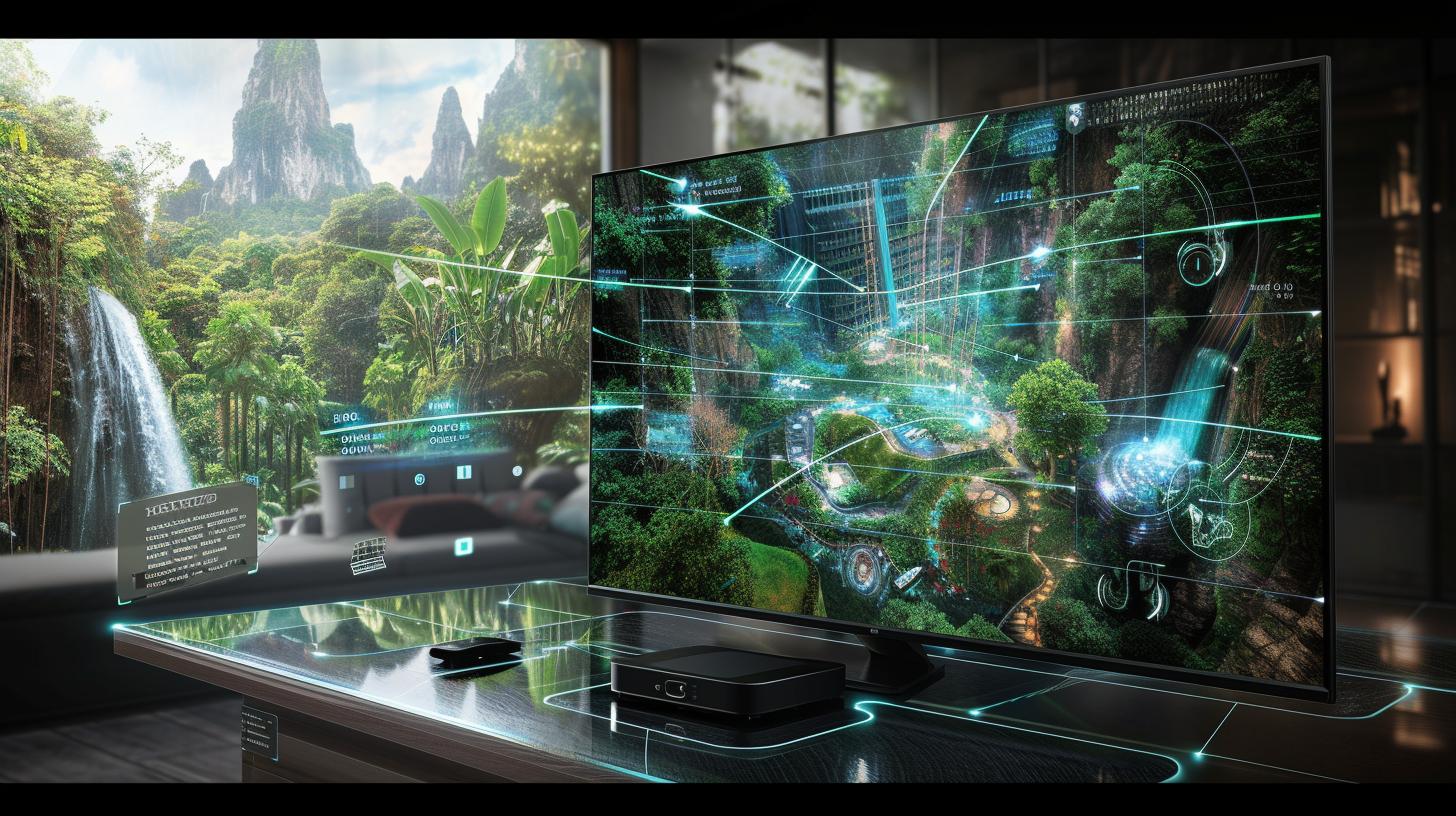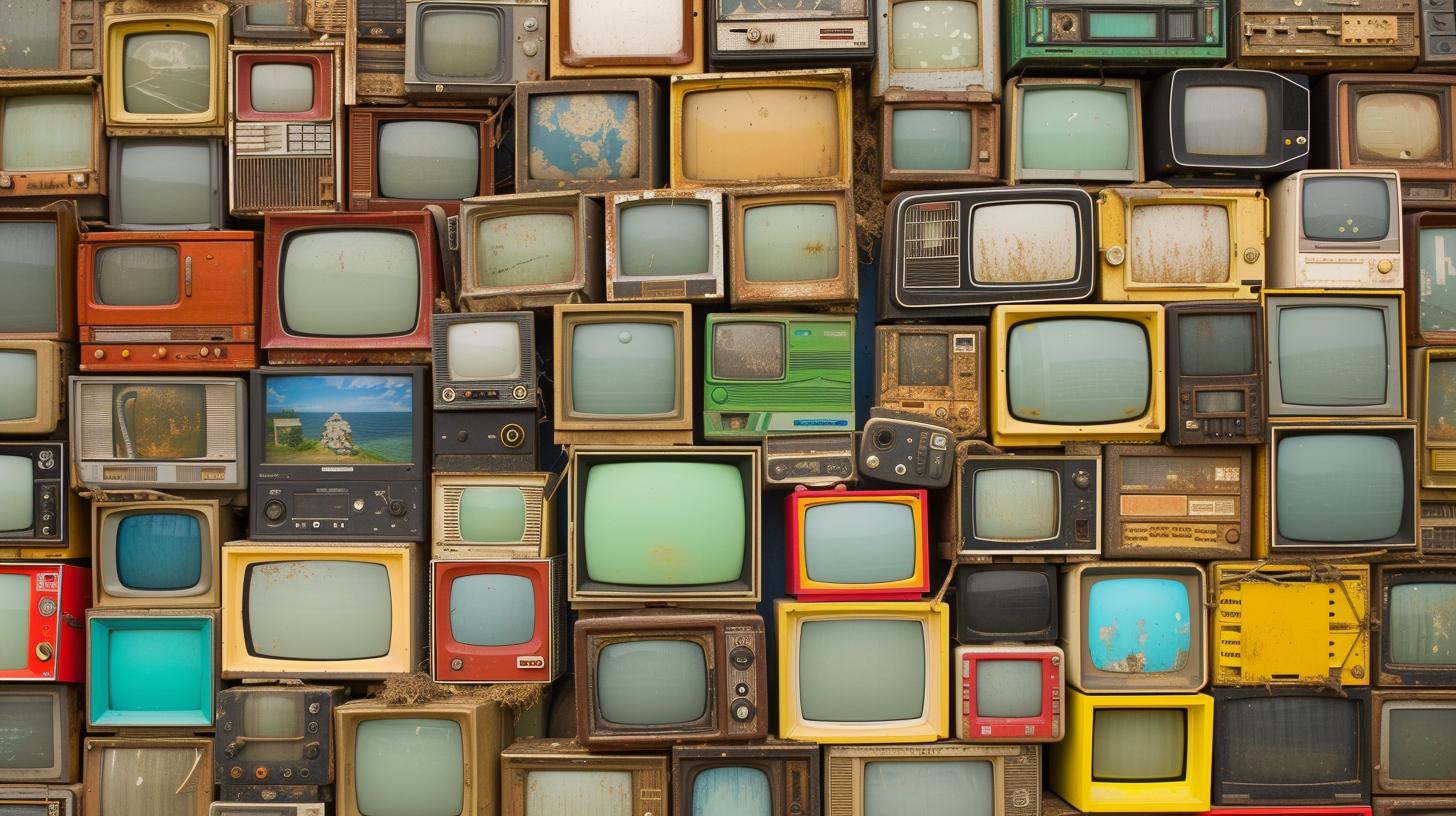
Is your TV giving you a hard time connecting to the internet? Many people rely on their smart TVs to access a variety of online content, from streaming services to web browsing. When your TV won’t connect to the internet, it can be frustrating and limit your viewing options. In this article, we will explore the common reasons behind this issue and provide troubleshooting steps to help you resolve it.
Having your TV connected to the internet is essential for accessing a wide range of entertainment options. From streaming your favorite shows and movies to accessing online gaming platforms, a stable internet connection is crucial for maximizing the capabilities of your smart TV. Additionally, internet connectivity allows you to access software updates and enjoy new features that enhance your viewing experience.
There are several common reasons why your TV may be having trouble connecting to the internet. These can range from issues with the Wi-Fi signal strength in your TV’s location to outdated firmware or interference from other devices. By understanding these potential causes, you can effectively troubleshoot the problem and get back to enjoying seamless connectivity on your TV.
In the following sections, we will delve into troubleshooting steps to address the issue of a TV that won’t connect to the internet. We will cover methods such as checking the Wi-Fi signal strength in your TV’s location, updating the TV’s firmware and software, restarting both the router and TV, checking for interference with other devices, and even resetting the TV to factory settings if necessary.
By following these steps, you can identify and resolve any connectivity issues affecting your TV.
It’s important to recognize that in some cases, advanced troubleshooting may be required if basic methods don’t resolve the issue. Seeking professional help from a technician or customer support for your specific TV model can provide valuable insights and solutions. Additionally, alternative methods for accessing internet content on your TV can offer temporary solutions while addressing connectivity issues. Ultimately, achieving a stable internet connection for your TV is key to unlocking its full potential for entertainment.
Common Reasons Why Your TV Won’t Connect to the Internet
Are you having trouble connecting your TV to the internet? There are several common reasons why this issue occurs, and it can be frustrating when you’re unable to access online content from your TV. In this section, we will explore some of the most typical causes for a TV not connecting to the internet and provide troubleshooting steps to help you resolve the issue.
One common reason why your TV may not connect to the internet is due to a weak Wi-Fi signal in its location. If the Wi-Fi signal is too weak, it can prevent the TV from establishing a stable connection. It’s important to check the Wi-Fi signal strength in the area where your TV is located and consider using a Wi-Fi extender if needed to boost the signal.
Another potential cause for your TV’s internet connection issues could be outdated firmware or software. Just like any other electronic device, TVs require regular updates to ensure optimal performance. If your TV’s software or firmware is outdated, it may have difficulty connecting to the internet. Check for any available updates for your TV and make sure it’s running on the latest version.
Sometimes, simply restarting both your router and your TV can help resolve connectivity issues. Restarting these devices can refresh their connections and clear any temporary glitches that may be causing the problem. Try unplugging both devices for a few minutes before plugging them back in and powering them on again.
Interference with other devices can also affect your TV’s ability to connect to the internet. Nearby electronic devices such as cordless phones, microwave ovens, or Bluetooth devices can interfere with Wi-Fi signals, causing connectivity issues for your TV. Make sure there are no other devices causing interference with your Wi-Fi network.
If you’ve tried all these troubleshooting steps and are still unable to fix the issue, resetting your TV to factory settings may be necessary. This will revert all settings on your TV back to their original state and can help eliminate any persistent problems that are preventing it from connecting to the internet.
Even after trying all these troubleshooting tips, if you’re still unable to resolve the issue “my tv won’t connect to the internet,” it may be time to seek professional help for advanced troubleshooting. Contacting customer support or a knowledgeable technician can help identify any underlying technical problems that require expert assistance.
| Reasons | Troubleshooting Steps |
|---|---|
| Weak Wi-Fi signal | Check Wi-Fi signal strength; use Wi-Fi extender if needed |
| Outdated firmware/software | Update TV’s firmware/software |
| Interference with other devices | Avoid interference from nearby electronics; check for neighboring networks |
Troubleshooting Steps to Fix the Issue
Having your TV connected to the internet is essential in today’s digital age as it allows you to access a wide range of online content, including streaming services, apps, and even web browsing. However, encountering issues where your TV won’t connect to the internet can be frustrating. In this section, we will discuss some troubleshooting steps that you can take to fix this issue and get your TV back online.
First and foremost, it’s important to understand the common reasons why your TV may be having trouble connecting to the internet. This could be due to issues with the Wi-Fi signal strength in the TV’s location, outdated firmware or software, interference from other devices, or even a glitch in the TV’s settings.
To begin troubleshooting, start by checking the Wi-Fi signal strength in the location of your TV. A weak signal can make it difficult for your TV to establish a stable connection with the internet. You can do this by navigating to the network settings on your TV and looking for the Wi-Fi signal strength indicator.
Another common step is updating the TV’s firmware and software. Manufacturers often release updates that address connectivity issues and improve overall performance. Check for any available updates in the settings menu of your TV and proceed with downloading and installing them if available.
If updating the firmware and checking the Wi-Fi signal strength doesn’t solve the issue, try restarting both your router and TV. Sometimes a simple reboot can help clear out any temporary glitches causing connectivity problems.
It’s also important to check for any interference with other devices that could be affecting your TV’s connection to the internet. Devices like cordless phones, microwaves, or even neighboring Wi-Fi networks can cause interference. Try relocating these devices or switching channels on your router to minimize interference.
If all else fails, you may need to consider resetting your TV to its factory settings. Keep in mind that this will erase all custom settings and preferences, so be sure to back up any important data before proceeding with a reset.
By following these troubleshooting steps, you should be able to identify and resolve most common issues causing your TV not to connect to the internet. However, if you’ve exhausted all options or are uncomfortable performing these tasks yourself, seeking professional help from a technician may be necessary for more advanced troubleshooting.
Finally, if you’re unable to get your TV connected to the internet after trying various troubleshooting steps, consider alternative methods for accessing internet content on your TV such as using streaming devices like Roku or AppleTV which connect directly to Wi-Fi or through an Ethernet cable connection.
Remember that a stable internet connection is crucial for ensuring a seamless experience when using smart features on your television set.
Checking the Wi-Fi Signal Strength in the TV’s Location
When your TV won’t connect to the internet, one of the first steps you should take is to check the Wi-Fi signal strength in the TV’s location. A weak Wi-Fi signal can be a common reason for connectivity issues, and improving the signal strength can often resolve the problem.
To check the Wi-Fi signal strength on your TV, follow these steps:
- Go to the settings menu on your TV and navigate to the network or Wi-Fi settings.
- Look for an option that allows you to view available networks or check the signal strength of your current connection.
- If possible, position your TV closer to your wireless router to see if the signal strength improves.
- Consider using a Wi-Fi extender or booster to enhance the signal in the area where your TV is located.
In addition to checking the actual strength of the Wi-Fi signal, it’s important to consider any potential interference that may be affecting connectivity.
- Ensure that there are no physical obstructions blocking the Wi-Fi signal from reaching your TV, such as walls, furniture, or large appliances.
- Avoid placing electronic devices like cordless phones or microwave ovens near your router, as they can interfere with the Wi-Fi signal.
If after taking these steps you find that the Wi-Fi signal strength is not an issue, it may be necessary to explore other troubleshooting methods to address why my tv won’t connect. However, improving Wi-Fi signal strength in your TV’s location is often a simple yet effective way to resolve connectivity issues and ensure a seamless internet connection for streaming and accessing online content.
Updating the TV’s Firmware and Software
One of the common reasons why your TV won’t connect to the internet could be outdated firmware and software. This is because outdated versions may not be compatible with the latest network protocols or security measures, leading to connectivity issues. Therefore, updating your TV’s firmware and software can often resolve the problem.
To update the firmware and software on your TV, you can typically do so through the settings menu. Look for an option related to software updates or system upgrades. Once you locate it, follow the on-screen instructions to check for updates and install them if available.
It’s important to note that some TVs may not support automatic updates or may require manual installation of updates using a USB drive. In such cases, you will need to visit the manufacturer’s website, find the relevant downloads section, and follow their instructions for manually updating your TV’s firmware and software.
As technology continues to evolve rapidly, manufacturers often release periodic updates to improve performance, fix bugs, enhance security, and add new features. By keeping your TV’s firmware and software up to date, you not only ensure a stable internet connection but also optimize your viewing experience with access to the latest functionalities.

Lastly, if updating the firmware and software does not resolve the connectivity issue, it may be necessary to explore other troubleshooting steps or seek professional assistance for more advanced diagnosis and repair.
| Steps | Description |
|---|---|
| Check for automatic updates | Access settings menu on TV and look for software update option. |
| Manual installation | If automatic updates are not available, visit manufacturer’s website for manual download instructions. |
Restarting the Router and TV
When experiencing issues with your TV connecting to the internet, one of the common troubleshooting steps you can take is to restart both the router and the TV. This is often seen as a simple solution, yet it can effectively resolve connectivity issues caused by minor glitches in the network or the TV’s system.
Firstly, start by turning off your TV and unplugging it from the power source. Then, locate your router and turn it off as well. Wait for at least 30 seconds before plugging them back in. Once both devices have been restarted, turn on the router first and wait for it to fully initialize before turning on your TV.
By restarting both the router and the TV, you are essentially initiating a fresh connection between the devices. Any temporary network issues or conflicts within the system can be resolved through this process, allowing for a re-established and stable connection to be established.
In some cases, a simple restart may not suffice to resolve connectivity issues between your TV and internet. However, by following this troubleshooting step as part of a series of actions, you may potentially clear out minor hiccups that were causing the connection problem.
If after restarting both devices my tv won’t connect to the internet still persists, then it may be necessary to move on to other troubleshooting steps such as checking for any interference with other devices or updating the TV’s firmware and software. These additional measures can help identify and address more complex connectivity issues that restarting alone cannot resolve.
Checking for Any Interference With Other Devices
When trying to connect your TV to the internet, it can be frustrating when you encounter issues such as interference from other devices. Interference with other devices can disrupt the Wi-Fi signal and cause your TV to not connect to the internet. In this section, we will explore how to identify and address interference issues that may be preventing your TV from connecting to the internet.
Identifying Potential Sources of Interference
One common source of interference for Wi-Fi signals is other electronic devices in close proximity to your TV. Devices such as cordless phones, baby monitors, microwaves, and even neighboring Wi-Fi networks can all contribute to signal interference. It’s important to take stock of all the electronic devices in the vicinity of your TV and assess whether any of them could be causing interference.
Addressing Interference Issues
If you suspect that other devices are interfering with your TV’s ability to connect to the internet, there are several steps you can take to mitigate this issue. One simple solution is to move any potential sources of interference away from your TV or reposition your router so that it is not in close proximity to these devices.
Additionally, investing in a dual-band or tri-band router can help alleviate interference issues by spreading out Wi-Fi signals across different frequencies. This can minimize the impact of other electronic devices on your TV’s ability to connect to the internet.
Testing for Improvement
After implementing measures to address potential interference issues, it’s important to test whether these interventions have improved the situation. Try reconnecting your TV to the internet and assess whether you notice any difference in performance. If you continue experiencing connectivity problems, it may be necessary to explore alternative methods for accessing internet content on your TV.
By addressing potential sources of interference and taking proactive steps to minimize their impact on your Wi-Fi signal, you can improve the likelihood of successfully connecting your TV to the internet and enjoying seamless access to online content.
Resetting the TV to Factory Settings
At times, when your TV won’t connect to the internet, resetting it to factory settings can be a potential solution. This process will restore your TV to its original state, erasing any settings or configurations that may be causing connectivity issues. Here are the steps for resetting your TV to factory settings:
- Go to the “Settings” or “Menu” on your TV using the remote control.
- Navigate to the “System” or “Advanced Settings” option.
- Look for the “Factory Reset” or “Restore Default Settings” feature.
- Select this option and follow any on-screen prompts to confirm the reset.
It’s important to note that resetting your TV to factory settings will erase all customized settings, including network configurations and installed apps. Therefore, you will need to set up your Wi-Fi connection and reinstall any necessary apps after the reset is complete.
Before proceeding with a factory reset, you may want to consider backing up any important data such as app preferences or login information if possible.

Additional Tips:
- If you encounter difficulties resetting your TV, refer to the user manual for specific instructions tailored to your TV model.
- You can also visit the manufacturer’s website or contact their customer support for guidance on performing a factory reset.
Performing a factory reset can often resolve issues with connectivity and other technical problems. However, if this step does not address the issue of “my tv won’t connect to the internet,” it may be necessary to seek professional help for further troubleshooting.
Resetting your TV to factory settings should be considered as one of the last resort troubleshooting steps in order to regain internet connectivity on your TV. It is always recommended to try less drastic measures first before resorting to a full reset.
Remember that a stable internet connection is crucial in accessing online content and streaming services on your smart TV. If you continue experiencing difficulties with connecting your TV to the internet even after attempting these troubleshooting steps, seeking professional assistance from a technician familiar with smart TVs is recommended.
Seeking Professional Help for Advanced Troubleshooting
If you have tried all the basic troubleshooting steps and still find yourself saying “my TV won’t connect to the internet,” it may be time to seek professional help. There could be underlying issues with your TV or network that require a more advanced approach to resolve. In this section, we will discuss when it is appropriate to seek professional help and what you can expect from the process.
When to Seek Professional Help
If you have exhausted all the common troubleshooting steps and are still unable to connect your TV to the internet, it may be time to seek professional assistance. Some indicators that you need advanced help include consistently low Wi-Fi signal strength in the TV’s location, persistent firmware or software issues, or ongoing interference with other devices despite your best efforts to resolve them.
What to Expect
When seeking professional help for your TV connectivity issues, you can expect a thorough evaluation of your television and network setup. A technician will assess the potential causes of the problem and work with you to find a solution. This may involve diagnosing hardware issues with your TV, optimizing your home network for better connectivity, or identifying any external factors contributing to the problem.
Consulting With Technical Support
Many television manufacturers offer technical support services for customers experiencing connectivity issues. When reaching out for professional help, be prepared to provide relevant information about your TV model, network setup, and any error messages or symptoms you have observed. The technical support team will guide you through additional troubleshooting steps or schedule an on-site visit if necessary.
Working With Certified Technicians
In some cases, working with certified technicians or specialists may be necessary if the issue lies beyond basic troubleshooting methods. These professionals are equipped with advanced diagnostic tools and expertise to identify complex problems that are preventing your TV from connecting to the internet. They can provide targeted solutions tailored to your specific situation.
Additional Considerations
Before seeking professional help, consider reaching out to your internet service provider (ISP) as well. They may be able to offer insights into any potential network-related issues affecting your TV’s connectivity. Additionally, consulting online forums or communities dedicated to tech support can provide valuable advice from individuals who have faced similar challenges.
Remember that while seeking professional help may involve additional costs, resolving the issue effectively is essential for maximizing your TV viewing experience.
Alternative Methods for Accessing Internet Content on Your TV
Nowadays, having access to internet content on your TV has become an essential part of the overall viewing experience. Whether it’s streaming your favorite shows and movies, accessing apps, or even browsing the web, a stable internet connection is crucial for unlocking the full potential of your smart TV.
However, if you find yourself in a situation where your TV won’t connect to the internet, there are alternative methods to consider in order to still enjoy internet content on your TV.
Using a Digital Media Player or Streaming Device
If your TV is having trouble connecting to the internet, one alternative method is to use a digital media player or streaming device that does have internet access. Devices such as Roku, Apple TV, Amazon Fire Stick, or Google Chromecast can be connected to your TV via HDMI and provide access to various streaming services and apps. These devices have their own built-in Wi-Fi connections and can serve as a workaround if your TV is unable to connect.
Screen Mirroring From Another Device
Another alternative method for accessing internet content on your TV when it won’t connect is by using screen mirroring from another device. Many smartphones, tablets, and laptops have the capability to wirelessly mirror their screens onto a smart TV. This allows you to view content from the mirrored device directly on your TV screen, effectively bypassing the need for the TV itself to be connected to the internet.
Using an Ethernet Connection
If Wi-Fi connectivity is posing issues for your smart TV, an alternative solution could be to use an Ethernet connection instead. Most modern smart TVs come equipped with an Ethernet port that allows you to directly connect your TV to your router using an Ethernet cable. This eliminates any issues related to Wi-Fi connectivity and ensures a stable internet connection for accessing online content on your TV.
In case my tv won’t connect to the internet despite these alternative methods, it may be worth exploring other options such as using a mobile hotspot or seeking assistance from a professional technician who specializes in resolving connectivity issues with smart TVs. Although these alternatives may not completely replace the convenience of having a direct internet connection on your TV, they can serve as temporary solutions until the underlying issue preventing connectivity with the internet is resolved.
Conclusion
In conclusion, having your TV connected to the internet is becoming increasingly important in today’s digital age. From streaming your favorite shows and movies to accessing online content, a stable internet connection is crucial for a seamless TV experience. However, it can be frustrating when your TV won’t connect to the internet, but there are several common reasons and troubleshooting steps that can help resolve the issue.
One of the common reasons why your TV may not connect to the internet is due to poor Wi-Fi signal strength in its location. It is essential to check the signal strength and possibly reposition your router or use a Wi-Fi extender to improve connectivity. Additionally, ensuring that your TV’s firmware and software are up to date can also resolve connectivity issues.
Restarting both the router and the TV, checking for any interference with other devices, and resetting the TV to factory settings are also effective troubleshooting steps. These measures can help address any minor glitches or connectivity issues that may be preventing your TV from connecting to the internet.
If you have exhausted all troubleshooting options and still find that “my tv won’t connect to the internet,” seeking professional help for advanced troubleshooting may be necessary. A trained technician can diagnose any underlying issues with your TV or network setup and provide a solution.
In cases where connecting your TV to the internet proves challenging, there are alternative methods for accessing internet content on your TV. This includes using a streaming device or a smart DVD player with built-in Wi-Fi capabilities, allowing you to enjoy online content without directly connecting your TV to the internet.
In summary, a stable internet connection is essential for maximizing your TV’s capabilities and accessing a wide range of entertainment options. By understanding common connectivity issues and following proper troubleshooting steps, you can ensure that your TV remains connected to the internet for an uninterrupted viewing experience.








